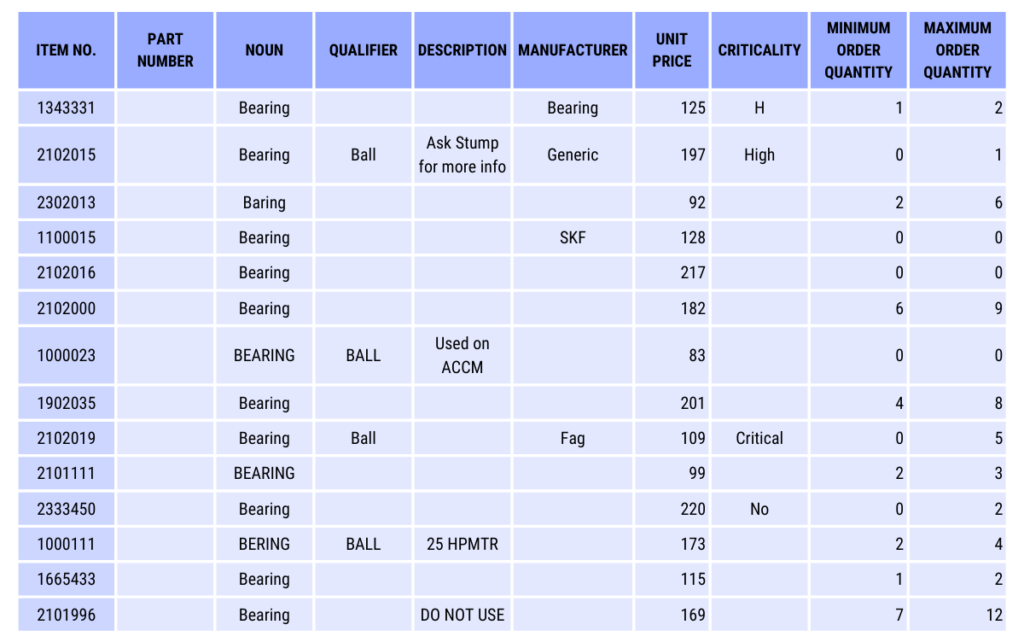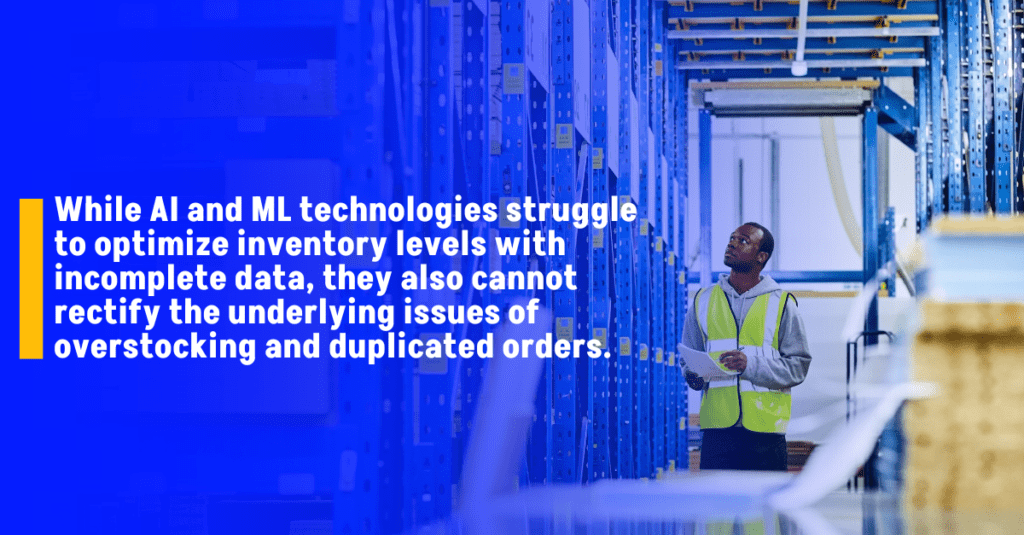The Unvarnished Truth About Technology in MRO Inventory: Magic Wand Not Included
In the realm of Maintenance, Repair, and Operations (MRO) inventory management, the enticement of advanced technology like Artificial Intelligence (AI), Machine Learning (ML), Enterprise Resource Planning (ERP), and Enterprise Asset Management (EAM) systems is captivating.
Companies are inundated with promises of operation transformation, cost reduction, and enhanced efficiency. However, this forward-looking narrative often misses a crucial element: the need for complete and accurate inventory data.
Let’s draw an analogy with a high-performance race car. It’s engineered for speed, precision, and efficiency. But what if you don’t know how to drive, or worse, the roads you’re driving on are riddled with potholes and unclear signs? No matter how advanced the car is, its potential remains untapped in the absence of a skilled driver and proper road conditions. This scenario parallels many organizations’ situations when implementing advanced MRO technologies.

These technologies aren’t magical solutions. They’re not like wands waved by wizards from Hogwarts to fix inventory management issues. Their success heavily relies on the quality of inventory data input. Without detailed and accurate data on part numbers, manufacturers, and other key attributes, these systems are like high-performance race cars trying to navigate through an obstacle course blindfolded.
Let us help you fix your inventory data!
Vendors often underplay this aspect, focusing on the capabilities of their solutions while overlooking the critical role of data quality. But the reality is stark – these technologies are only as effective as the data they process. Incomplete or inaccurate inventory data can significantly impede their effectiveness, rendering them less useful, or even redundant.
Before embracing these technological solutions, companies must first ensure that their inventory data is thoroughly curated. Neglecting this foundational step is like trying to win a race with an untrained driver – it’s a setup for failure. While adopting advanced technology is a positive move, it’s essential to understand that these tools need a solid base of reliable data to function effectively.
The Critical Role of Data Collection in MRO Inventory

This table illustrates common issues in MRO inventories – gaps in part numbers, sparse descriptions, and broad qualifiers. But another critical issue often overlooked is the problem of overstocking and duplicate items. These items are frequently ordered from Original Equipment Manufacturers (OEMs) under the assumption that they are uniquely made by them. This perception prevents the purchasing department from competitively bidding these items, leading to increased costs and inventory bloat.
The ramifications are significant. Not only do AI and ML technologies struggle to optimize inventory levels with incomplete data, but they also can’t rectify the underlying issues of overstocking and duplicated orders. Without accurate and detailed data, these advanced systems can’t identify alternative suppliers or suggest more cost-effective purchasing strategies. It’s a cycle that perpetuates inefficiency and inflated costs.

Therefore, improving inventory data through a thorough data collection exercise is more than just a step towards technological adoption; it’s a fundamental strategy to combat inefficiencies like overstocking and duplicate ordering. By ensuring each item is accurately recorded and understood, companies can open the door to more competitive bidding processes, ultimately leading to cost savings and more efficient inventory management.
In summary, while AI and ML offer exciting prospects for revolutionizing MRO inventory management, their success hinges on the quality of the underlying inventory data. Accurate, complete, and detailed data collection is not just the foundation for effective use of advanced technologies; it’s a crucial strategy for addressing systemic issues like overstocking and lack of competitive bidding. As we embrace the future of MRO inventory management, let’s remember that the journey towards technological excellence begins with the basics of data accuracy and thorough inventory analysis.
Inventory Management
Asset Management
Master Data Management
Distribution Management
Project
Management



